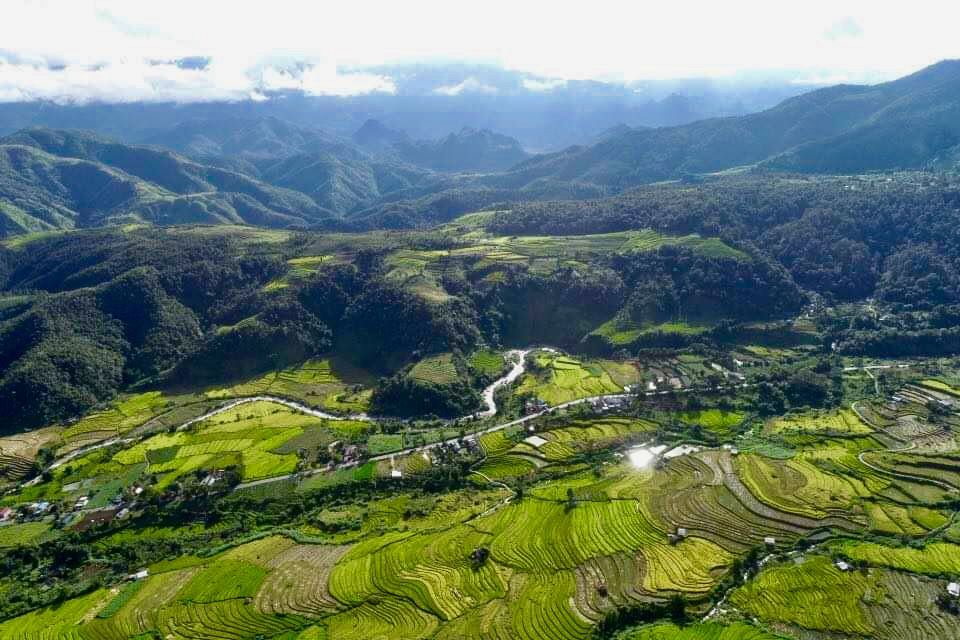
North Vietnam
Table of contents
Everything (or almost) about North Vietnam > general information
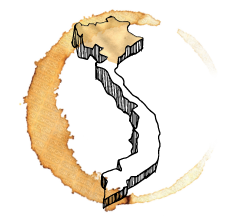 Formerly known as Tonkin, this region is particularly known for its atypical landscapes, terraced rice fields and the formidable mosaic of its local communities.
Formerly known as Tonkin, this region is particularly known for its atypical landscapes, terraced rice fields and the formidable mosaic of its local communities.
From the majestic mountains of the Far North to the rocky peaks emerging from the waters of Halong Bay, from rice fields to hills planted with centuries-old tea trees, the North of Vietnam offers with dangerousness and authenticity an eternal Vietnam, with amazing cultural diversity.
Weather reminder
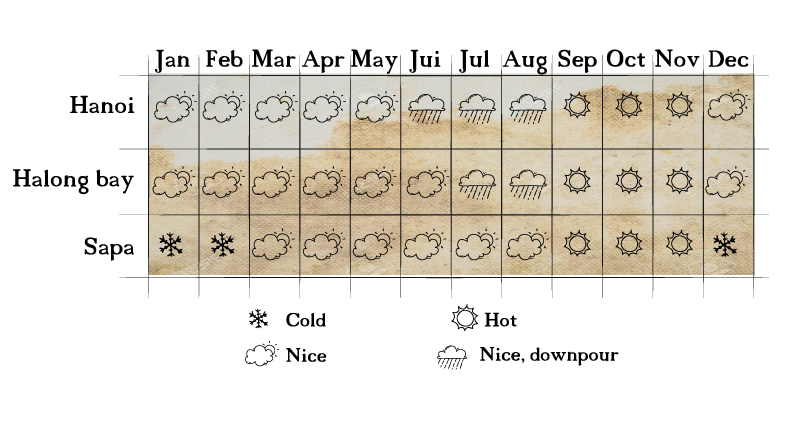
North Vietnam has 4 seasons as in Europe with very large temperature variations, amplified by the high level of humidity. It is tricky to rely on actual temperatures, there is a very big difference with the temperatures felt. This can sometimes be surprising, especially during the winter and summer months. You can easily add or remove 5 to 8 degrees. This is an important consideration when preparing your business. Note that during the summer, there can be large thunderstorms, tropical storms or typhoons (between August and November). Heavy rains usually last only an hour or two. Sometimes it can last all day, which can disrupt your activities.
What about the rice fields!
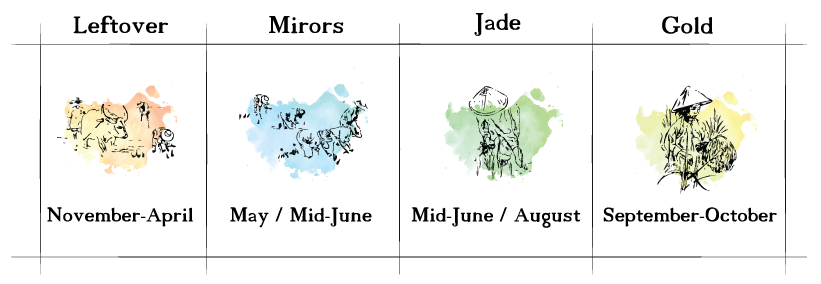
Special feature for the Pu Luong Nature Reserve. Two harvests per year unlike the mountains of the far north.
November to February, and June > rest mode
February to March and July > mirror mode
April to May and August to September > jade mode
May and October > gold mode
Please note that depending on weather conditions, periods may change slightly.
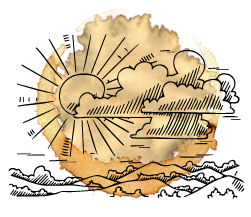
Where to go in North Vietnam? Destination information
Everybody’s talking about it!
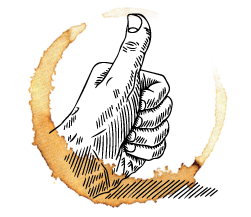 North Vietnam has many must-see places to visit. For a first trip, whether it is the vibrant capital, the rice terraces, the famous Halong Bay or the terrestrial Halong Bay, it is already possible to occupy several days.
North Vietnam has many must-see places to visit. For a first trip, whether it is the vibrant capital, the rice terraces, the famous Halong Bay or the terrestrial Halong Bay, it is already possible to occupy several days.
Hanoi
what you might call the urban jungle. A blend of tradition and modernity that delights all travellers. Many museums (Ethnologic, Literature, Women, War, etc.), pagodas and temples (Single Pillar, Ngoc Son, Tran Quoc, etc.), markets (silk, Dong Xuan, Ngoc Ha, Long Bien, neighbourhood markets, etc.), no time to get bored!
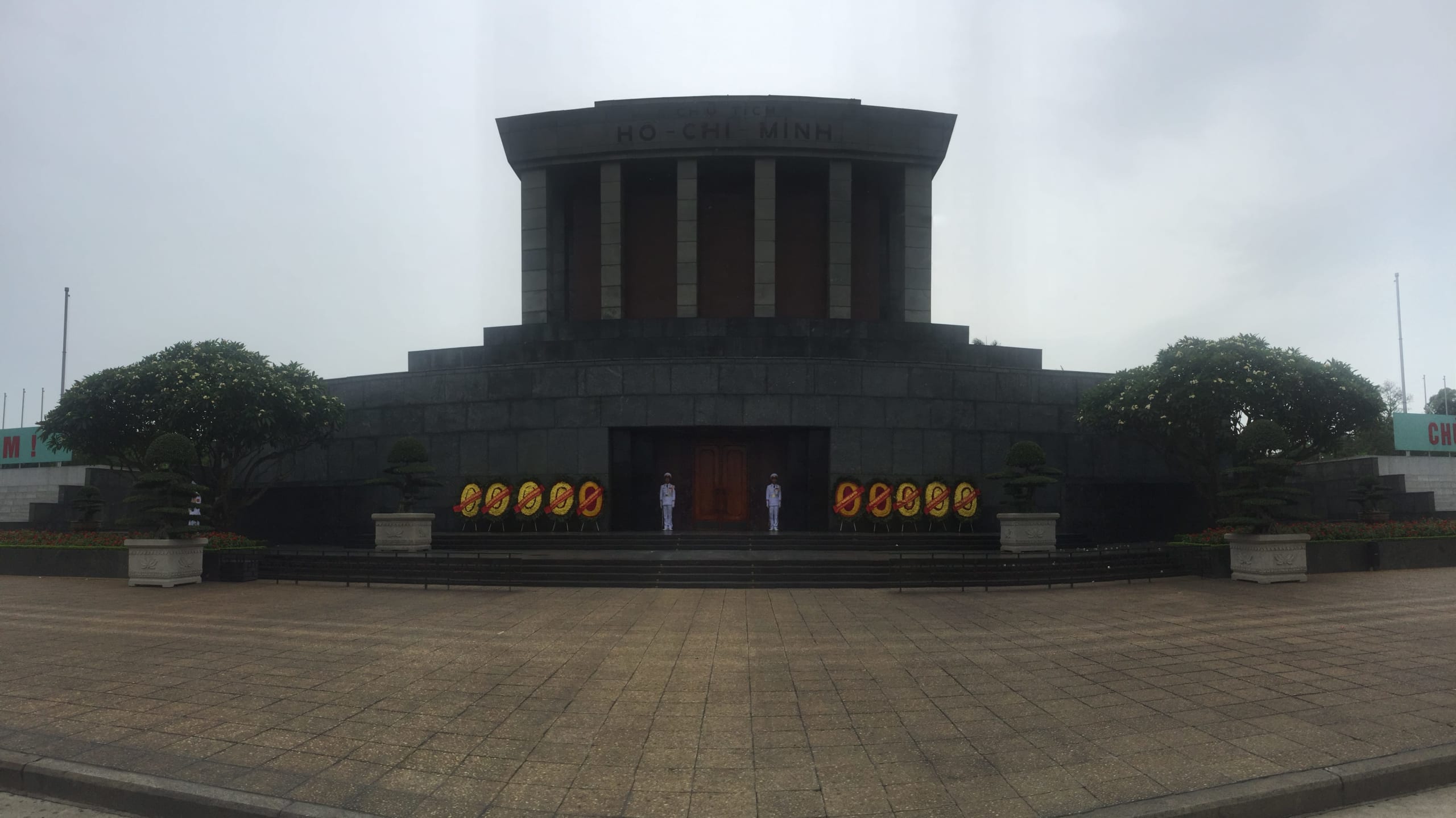

Duong Lam
This village is about 75mn from Hanoi and is famous for its century-old houses. Many travel agencies offer day trips to discover this unusual and interesting village.
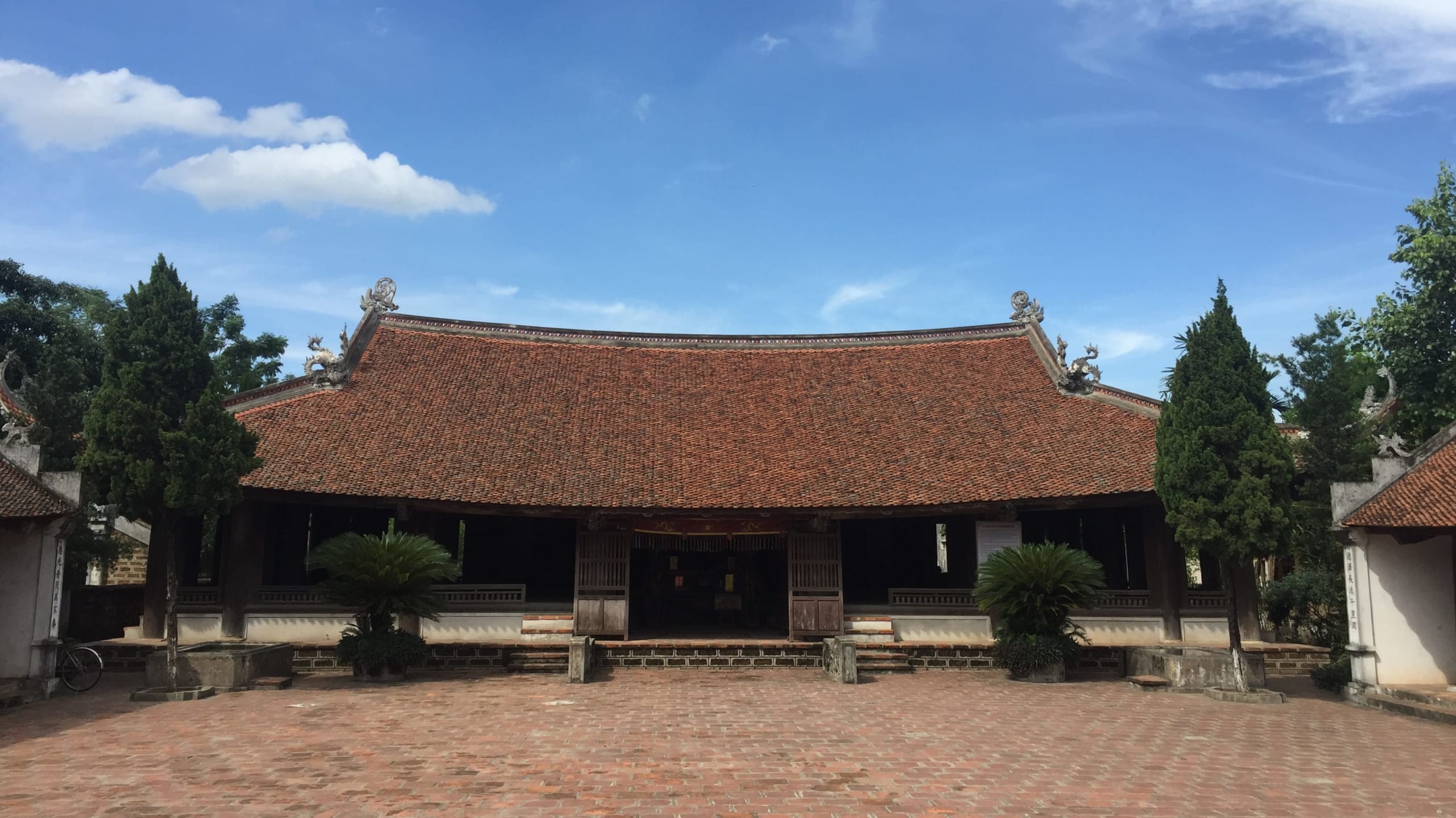
Halong Bay
A UNESCO World Heritage Site since 1994 and listed at 14th Place, Halong Bay remains the most visited site in Vietnam. Tourists will find it easier to go to Bai Tu Long Bay or Lan Ha Bay, which are much less frequented. The 2,000 islands and islets of limestone peaks make this a very exciting spectacle. The best way to enjoy it is to take a 2-day cruise even if the 3-day cruise offers a better immersion in this natural paradise.
Ninh Binh
Known as the terrestrial Halong Bay, Ninh Binh, or rather Tam Coc and Trang An, remains a cultural and landscaped treasure pit. The rice fields dotted in the middle of the karst peaks give the impression of a journey through time. The main activity remains the boat ride to Tam Coc or Trang An. But there is much more to visit like the Bai Dinh temple, the Van Long nature reserve, The Bich Dong Pagoda, climb to the top of Mua to contemplate the view or just a bike ride through the villages to admire the local life. Ninh Binh is also renowned for quality craftsmanship, visiting the surrounding villages for a cultural discovery. You can also visit the Cuc Phuong National Park to discover the Primate and Turtle Preservation Centre and hike through millennial trees.
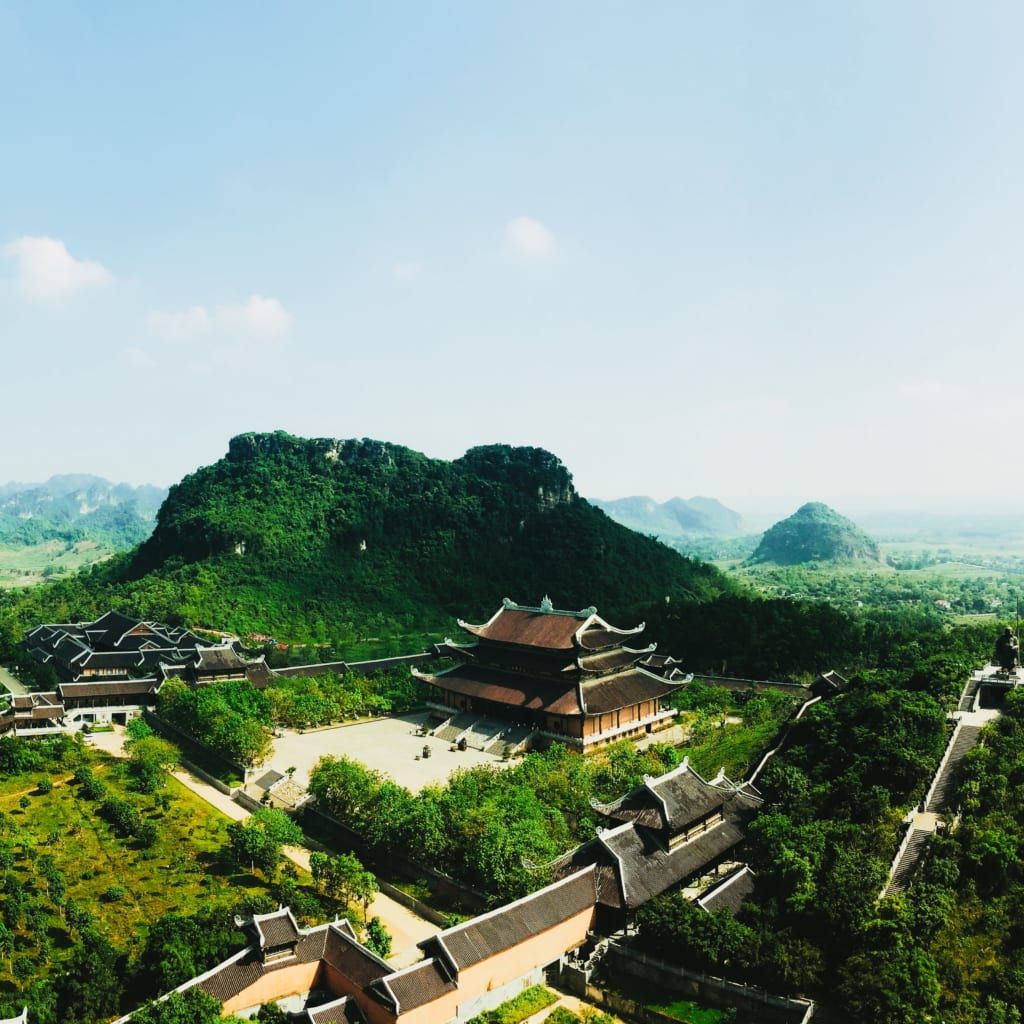
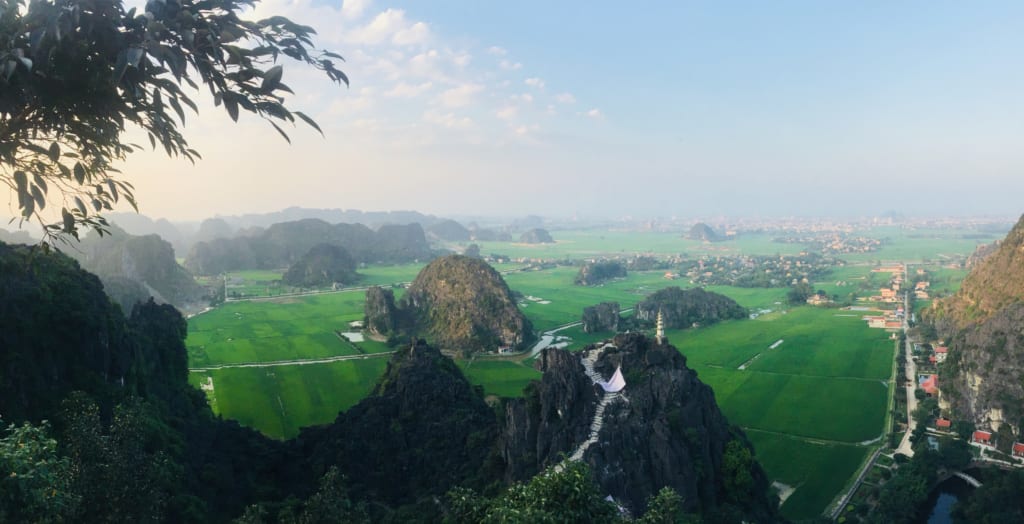
Sa Pa
How not to think of SAPA when you think of the rice terraces of North Vietnam. If the city has lost its charm due to mass tourism, the surroundings have kept a charm and authenticity. The treks are pleasant and the views fantastic. For families, the cable car to the top of Fansipan Mountain, Vietnam’s highest mountain, is an option to consider.
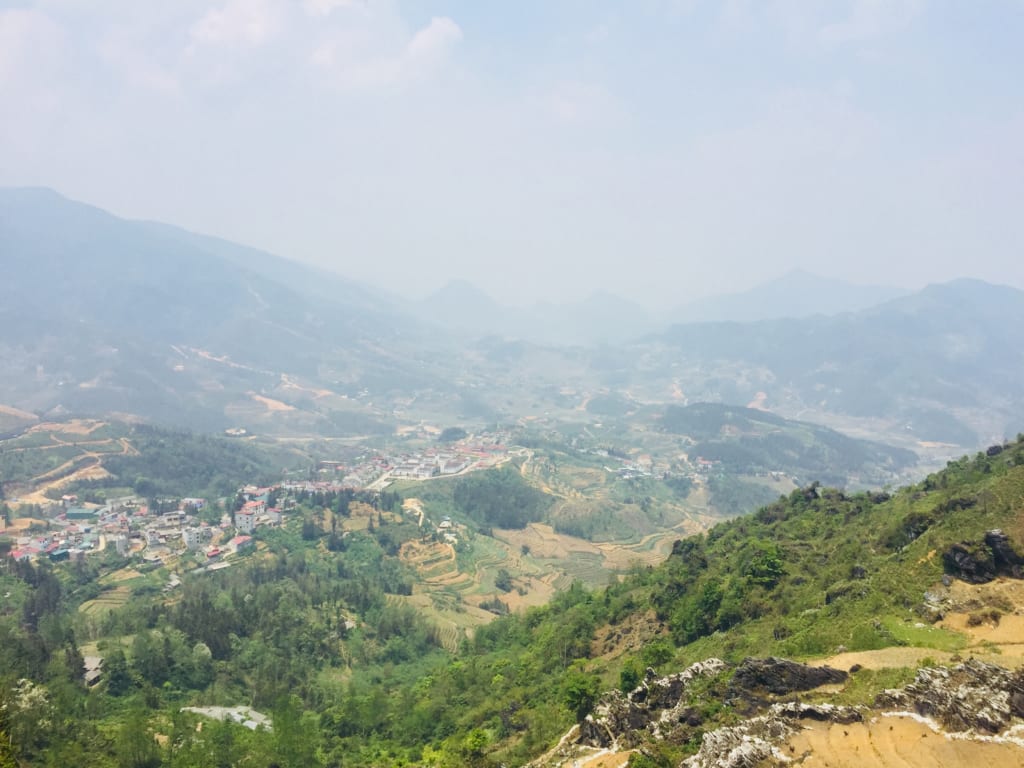
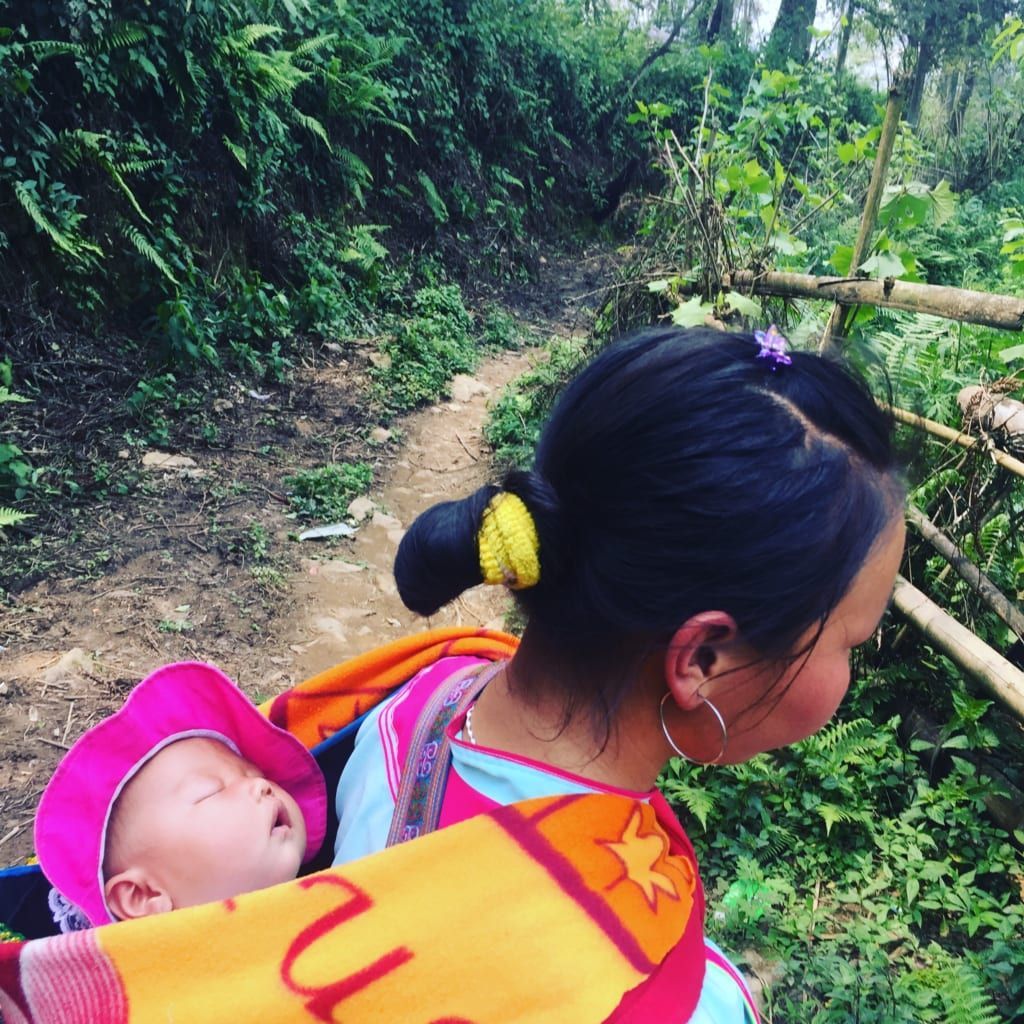
Ha Giang loop
Increasingly fashionable for more adventurous stays and breathtaking scenery. Dong Van Geo Park was classified in 2010 by UNESCO as a world geo-park, the only one in Vietnam. Probably the most beautiful and impressive landscapes of Vietnam. It is part of a 3 or 4 day loop. Not only will you be amazed by the scenery, but it is an opportunity to meet ethnic minorities (Tay, Hmong, Dao, Nung, etc.) and visit colourful local markets.
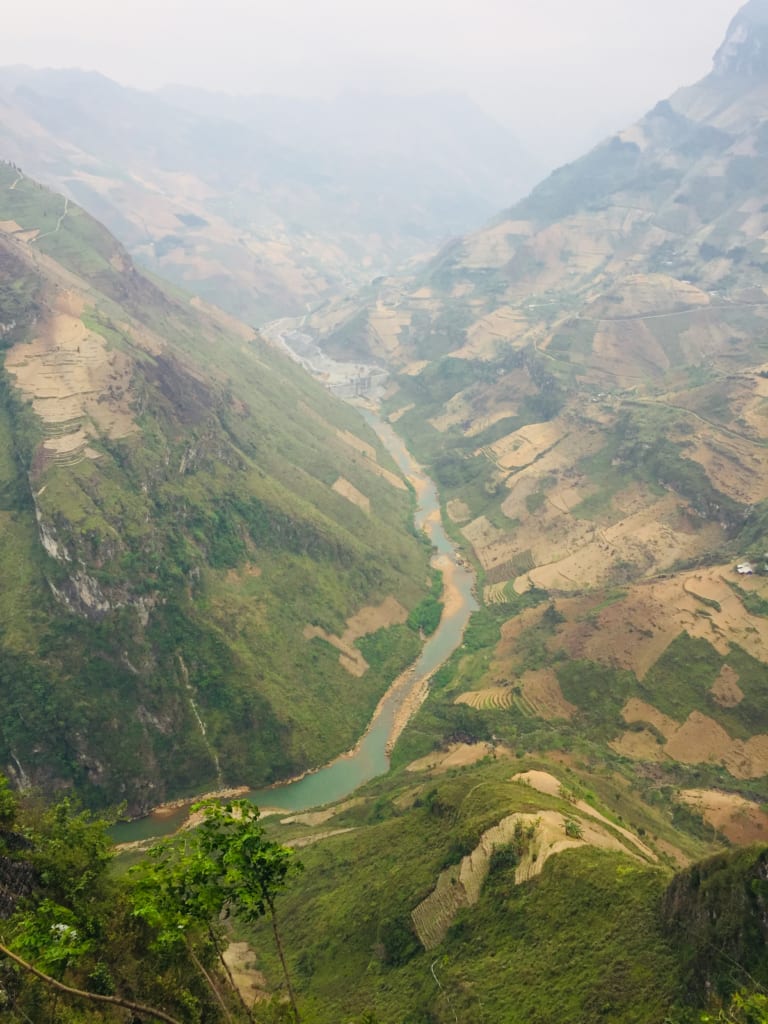
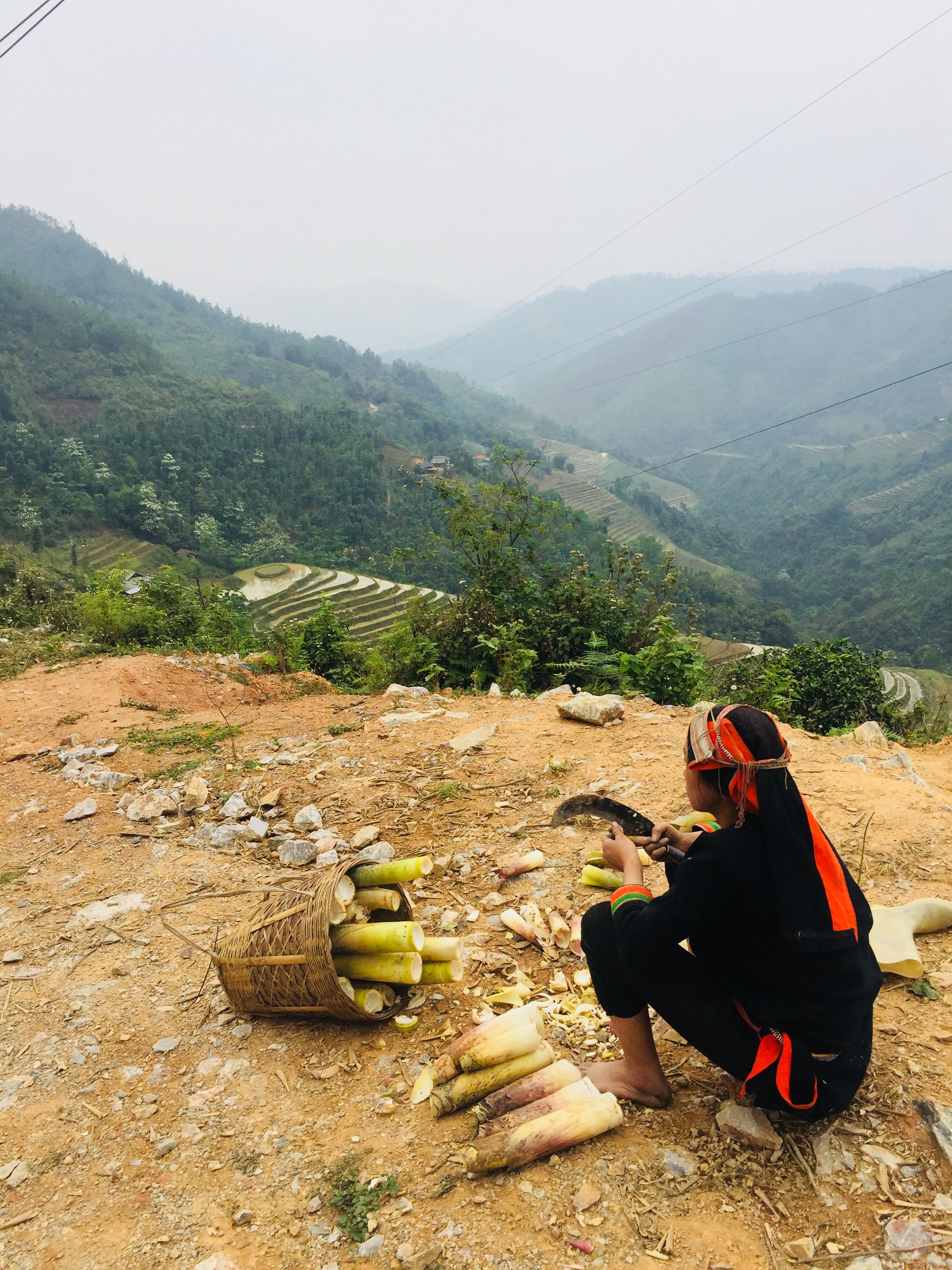
Mu Cang Chai
Known also for these beautiful rice terraces, Mu Cang Chai has become a must. In full tourist boom, we find all types of housing. It is the meeting place of all photographers, amateurs and professionals, from September to October when the rice fields arrive to harvest and they are of a bright yellow. Don’t miss the photographers’ route, the Khau Pha Pass.
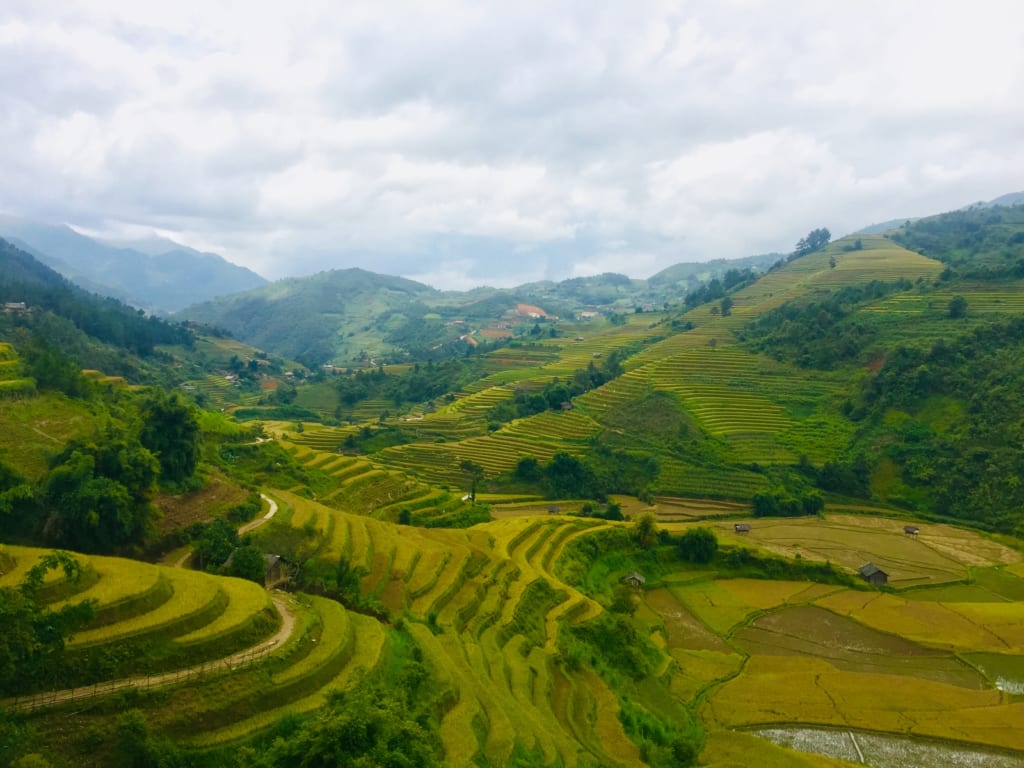
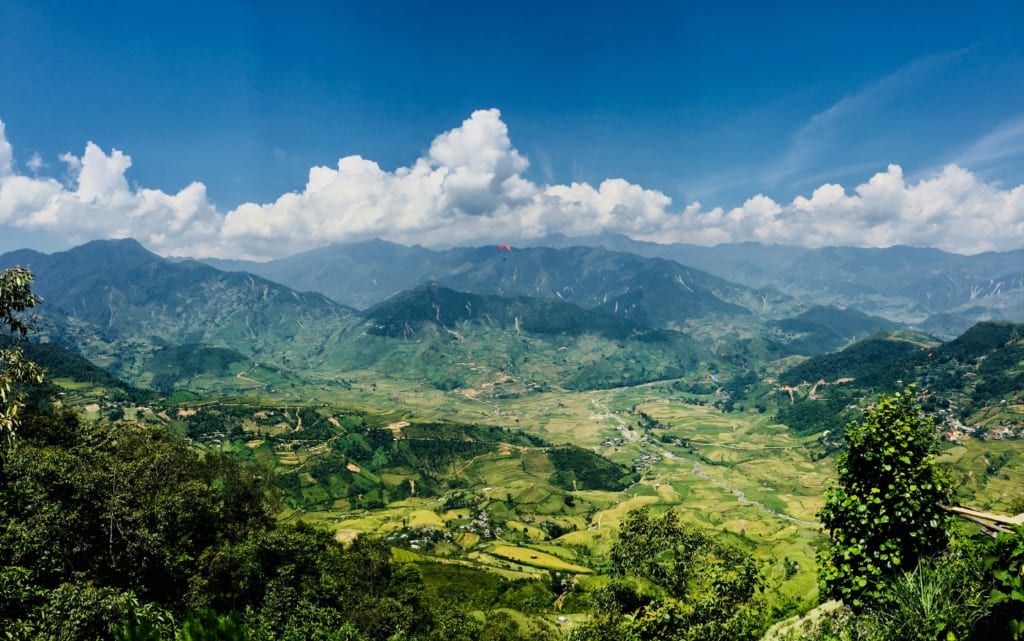
Mai Chau
Surrounded by a mountain range, the Mai Chau Valley is full of charm. The tourist development has been very fast but there are still some quiet neighboring places like the Mai Chau Hideaway on the lake. Cycling in the valley or hiking are pleasant activities. You can take the time to watch the locals work in the fields or practice traditional sewing.
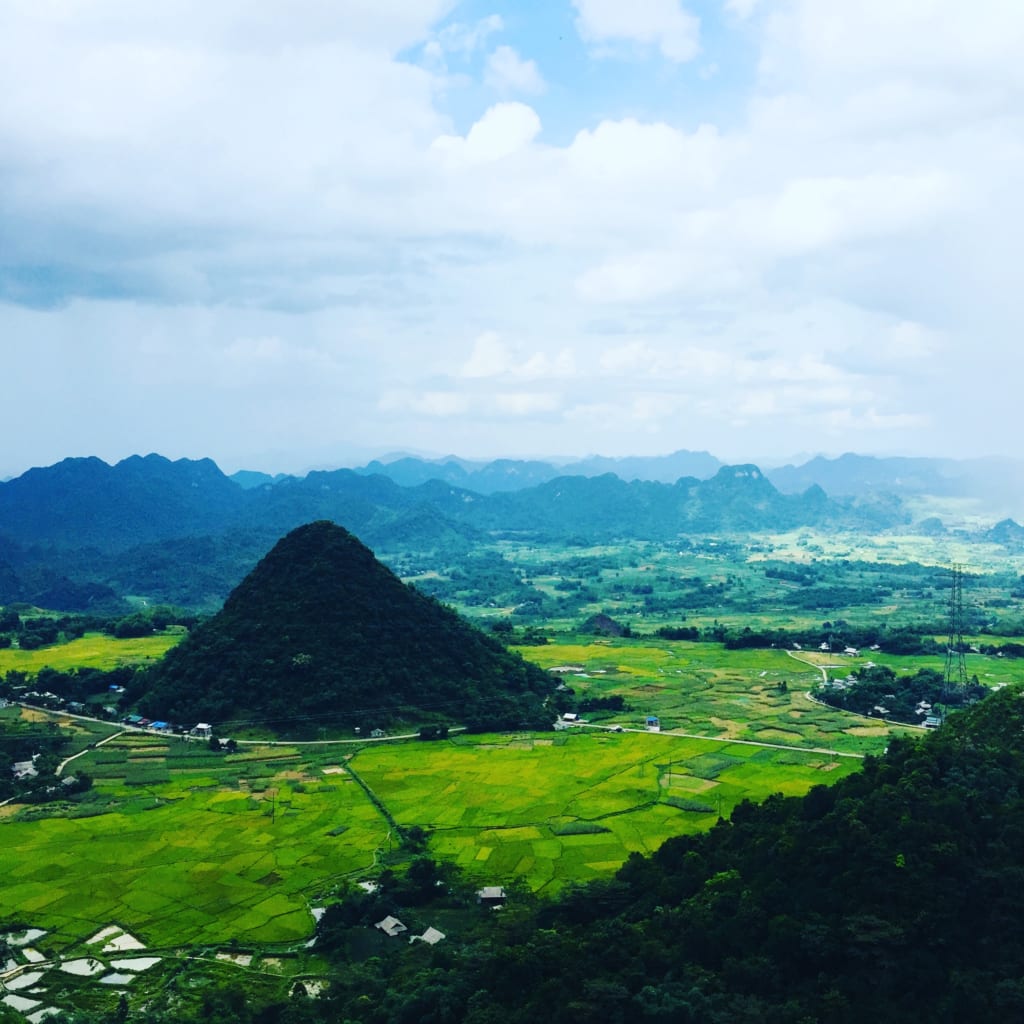
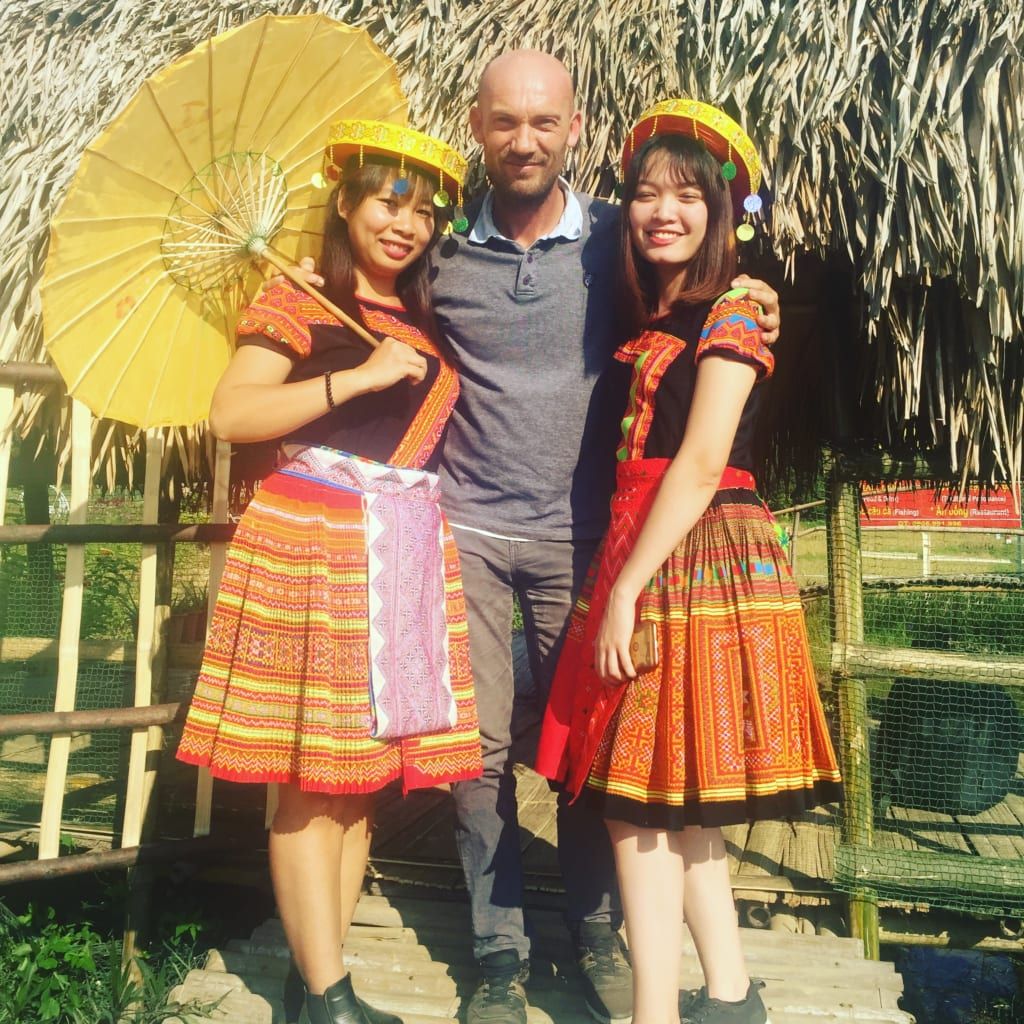
Ban Gioc Waterfall
After the Halong Bay and the rice fields on the terrace, the Ban Gioc waterfalls offer an incredible spectacle. These are the largest waterfalls in Vietnam. You can take a raft to get close to them. We cannot swim there and it is impossible to cross because on the other side we find ourselves in China. Nearby is the cave of Nguon Ngao, one can cross it. There are impressive rock formations, stalagmites and stalactites.
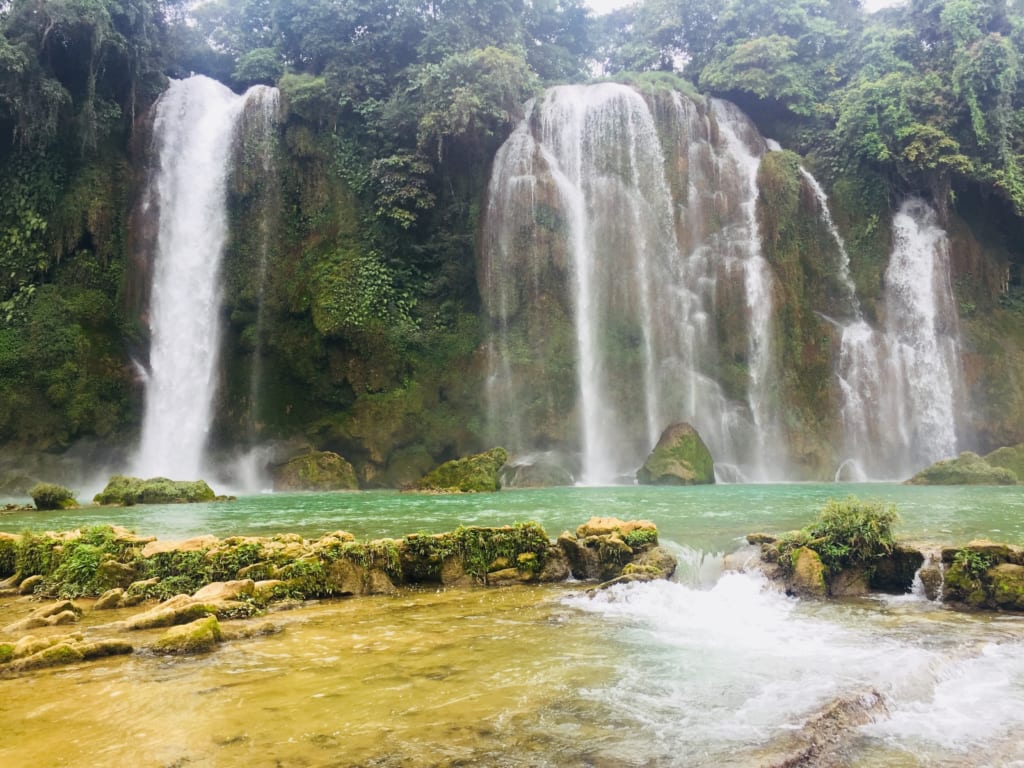
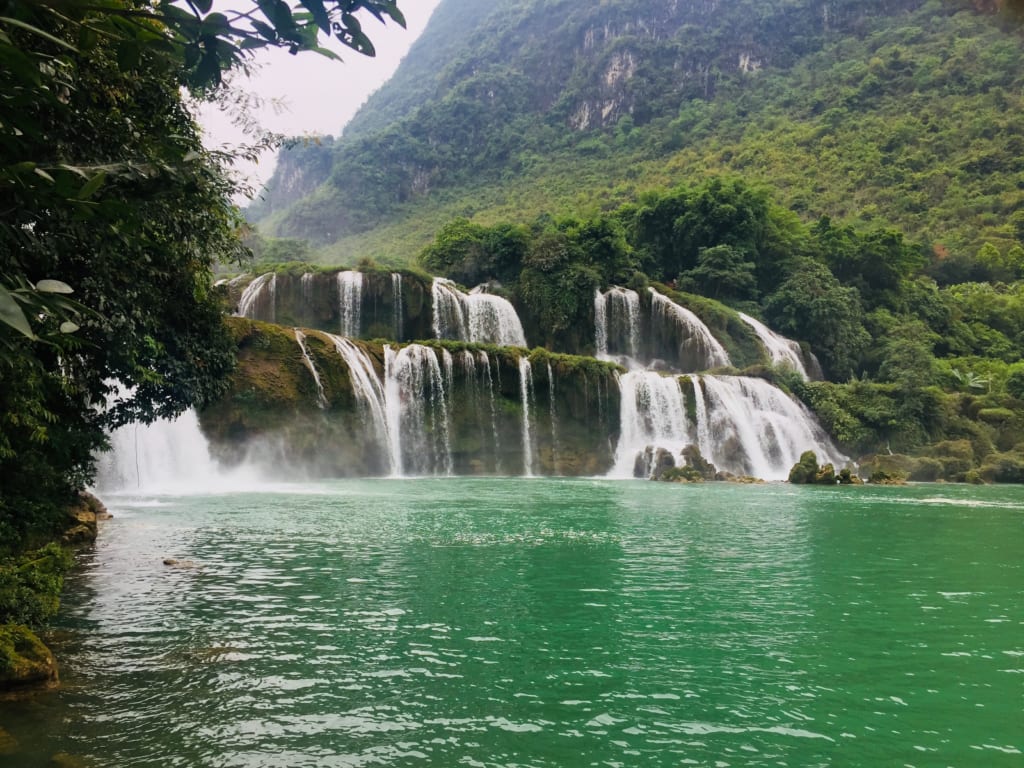
Ba Be lake
To the northeast is Ba Be Lake. It is the largest natural lake in Vietnam, surrounded by limestone peaks covered with primary forests. You can take a relaxing boat ride to the Puong Cave, the Dau Dang waterfalls and the Tien Fairy Pond. You can also enjoy a jungle hike around the lake and visit one of the Tay villages.
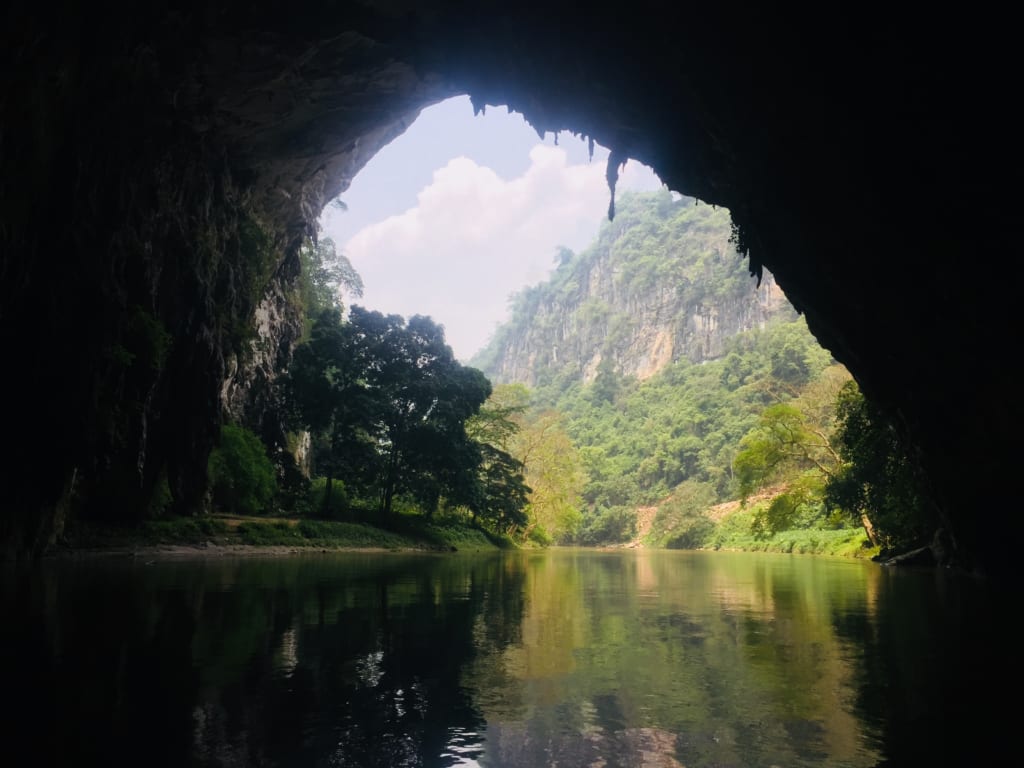
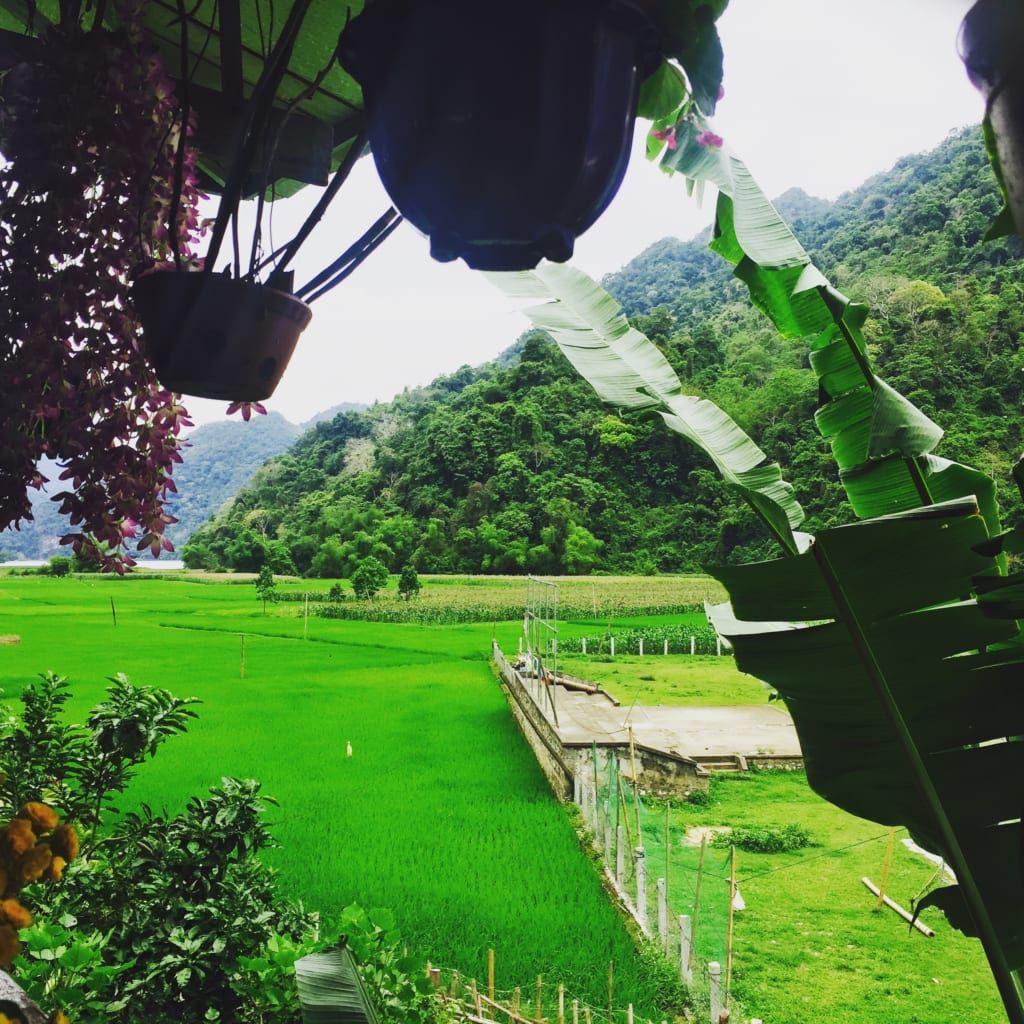
Dien Bien Phu
An emblem of the war with the French, Dien Bien Phu is a must-see for those wishing to travel through history. The A1 hill, the cemetery, the war museum are the places to visit. Although the city itself has less interest, the region is populated by about twenty different minorities and the road to Sapa offers fantastic landscapes.
News !
Mass tourism in some places can confuse tourist attraction with the reality of local life. Some places listed below allow a greater immersion in a Vietnam full of folklore, local tradition and minorities living at their own pace.
Thac Ba lake
Located 160 km north of Hanoi, Thac Ba Lake is unique. These multiple islets covered with forests look like giant mushrooms providing a soothing feeling. You can take a boat ride on the lake and admire the local fishermen dispersing their traps, enjoy the beautiful sunset and swim in the calm and clear waters of the lake. The Dao population living around the lake is very friendly and will be happy to share their traditions with visitors.
Pu Luong nature reserve
In the process of becoming one of the must-haves in North Vietnam, the Pu Luong Nature Reserve, called the Petit Sapa, has all the assets to become a privileged destination and must be planned during your trip. Excellent option because there are two harvests per year, which allows to have beautiful rice fields almost all year. The Pu Luong Mountain has opened to make a trek with camping and to admire in the early morning a splendid sunrise. Hiking is the main activity but you can try rafting on bamboo, mountain biking (to take from Hanoi). A day in the village of Hieu and its waterfall or in the hidden village of Kho Muong and its superb bat cave are definitely recommended during your visit.

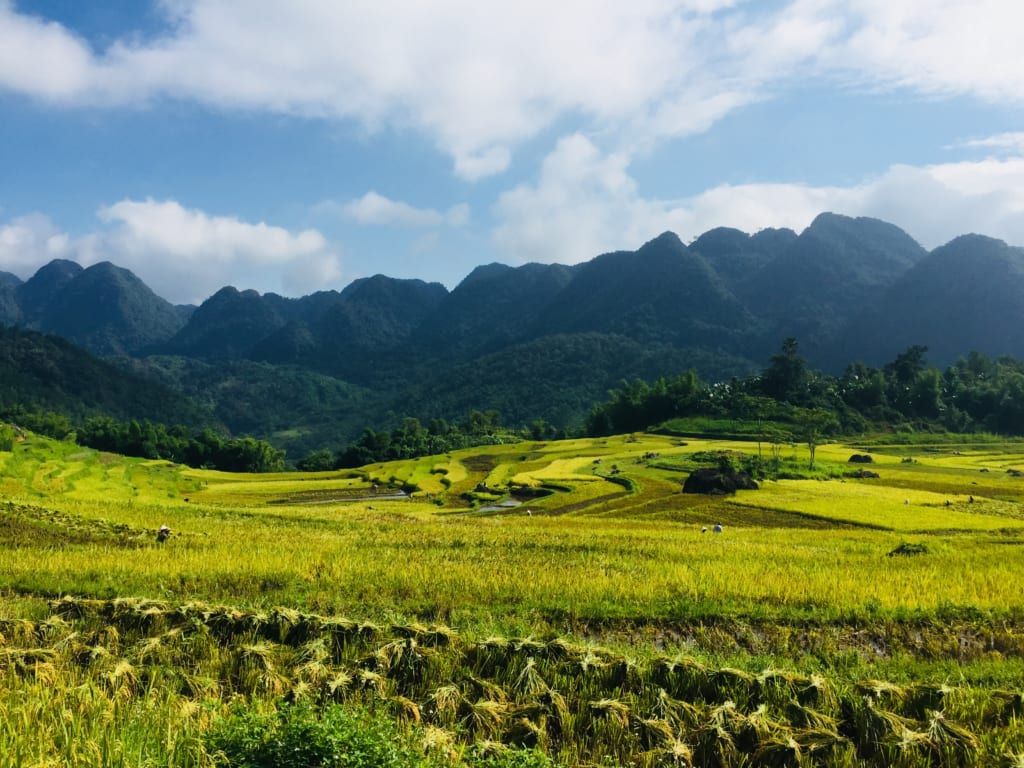
Ta Xua
Very popular for Vietnamese people, it is still not developed for international tourism. Accessible by the province of Son La or Yen Bai, the climb to the top of the mountain is splendid. A dense jungle is covered with moss gives it a very special look. You can camp at the top to have the chance to admire the sea of cloud in the early morning (depending on season) or a very nice view. As a bonus, when you return from the trekking, you can take a break to enjoy the hot springs of Tram Tau
Hoang Su Phi
Inhabited by Dao, La Chi and Nung, Hoang Su Phi is one of the most beautiful rice fields in North Vietnam. Located in the province of Ha Giang, the village of Ban Luoc has terraces with a height difference of 1500m and the largest area of stepped terraces (200ha). It is a very special place since the hamlets are right next to the rice fields, so you can easily soak up the local culture and contemplate the view.
Tam Duong
District of Lai Chau province, this land of minorities (14 different) perfectly combines mountain, waterfall, rice fields. For the bravest, a fairly steep trekking will take you to the top of Pu Ta Leng, the second highest peak in Vietnam at over 3,000m. The waterfall of Tac Tinh is superb, you can organize a picnic and swim there easily. The village of Si Thau Chai with its flat hat Dao will welcome you for a night. You can also discover the famous bamboo mills in the village of Ban Bo.
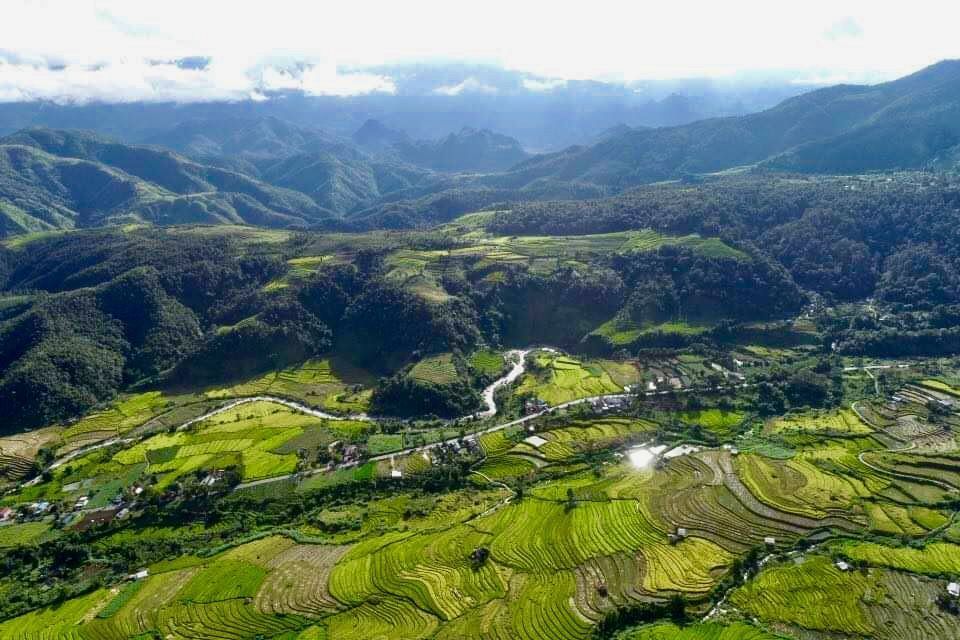
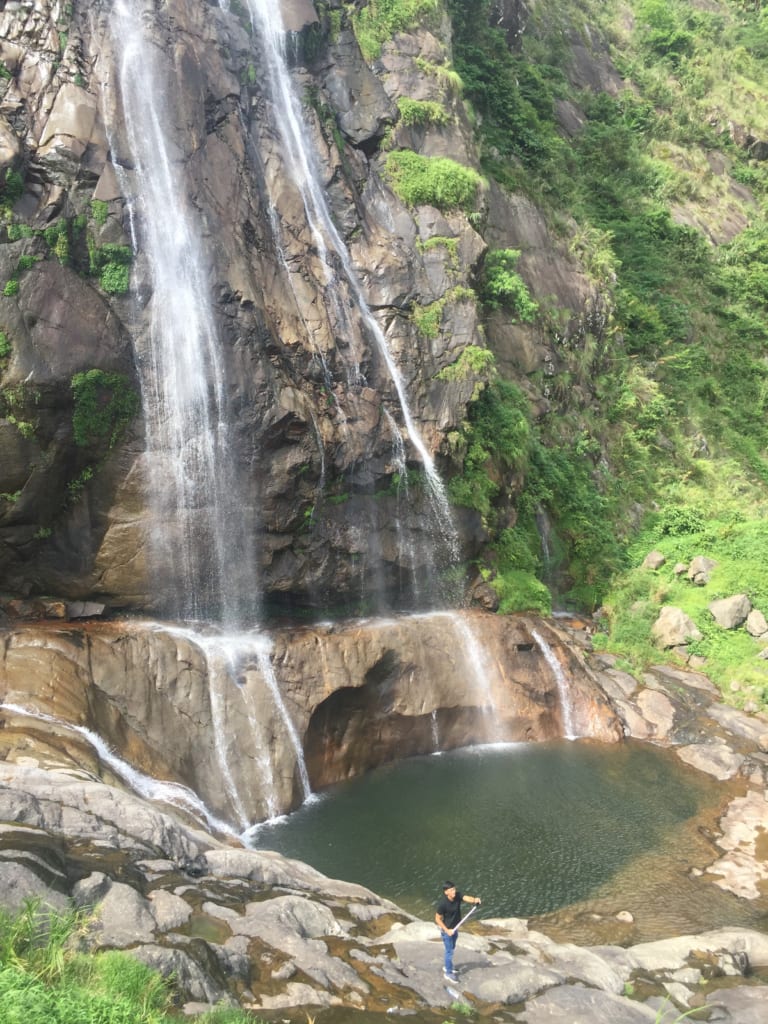
Tu Le
Just an hour from Mu Cang Chai is the charming village of Tu Le. Surrounded by mountains and a valley dotted with rice fields, it is a very pleasant place where you will not meet many tourists. You can take a nice bike ride to visit other villages and local markets. You can also hike several levels to the top of the mountains to admire the view. Perfect place for a night at home
La Pan Tan
Much less known, The Pan Tan is developing rapidly because of its exceptional location. Located next to Mu Cang Chai, the rice fields are splendid. Different accommodation options are possible from tents for camping under the stars to small, comfortable bungalows. Great alternative to get off the tourist trails of Mu Cang chai while enjoying the beauty of the surroundings.
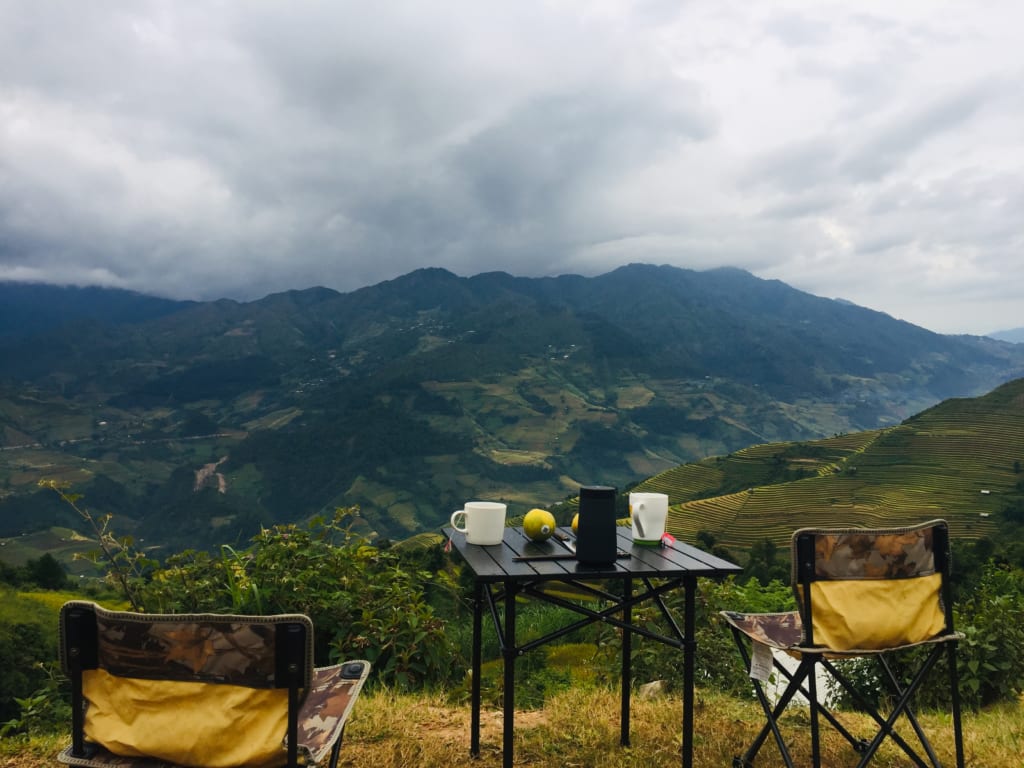
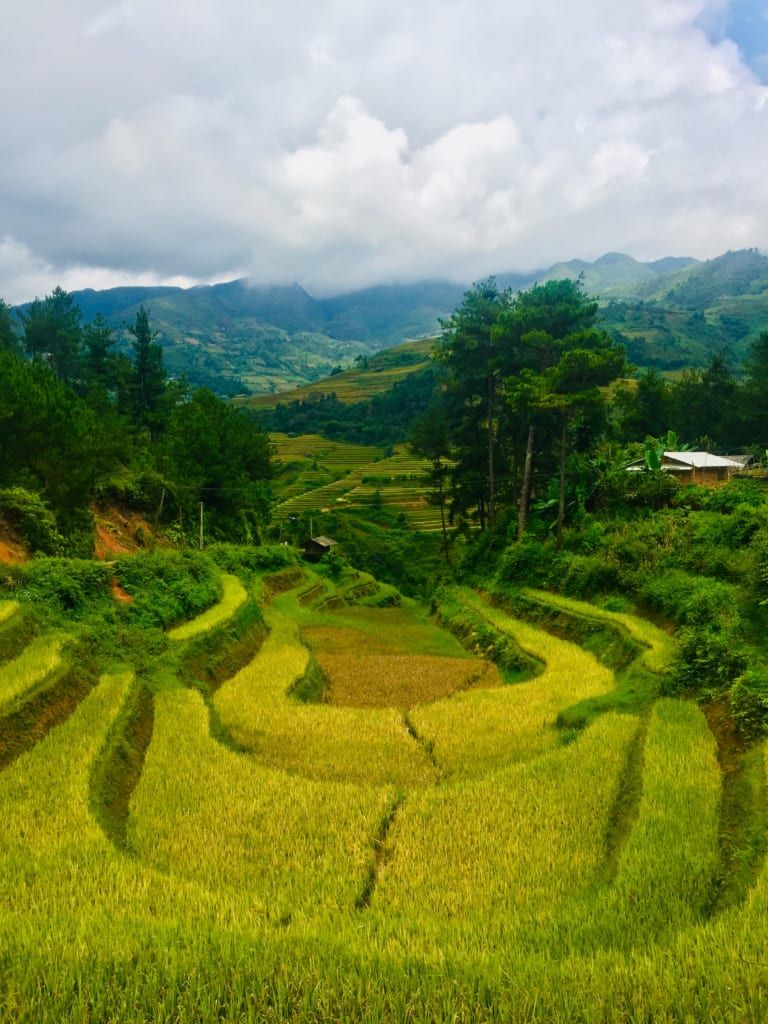
Da Bac
Located in the province of Hoa Binh, Da Bac is a charming village north of the Black River. When you get there, you will discover magnificent views of the river surrounded by green mountains. The Dao inhabitants are very welcoming. Almost no tourist goes there while the culture is intact. Very nice step for an immersion with the Dao.
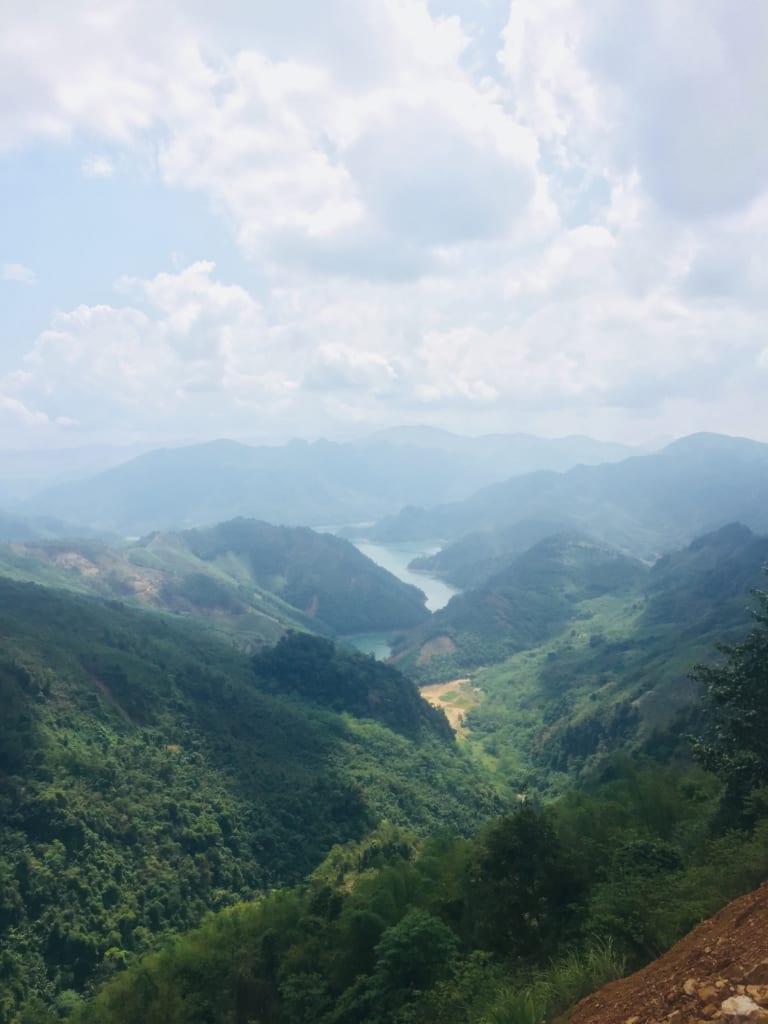
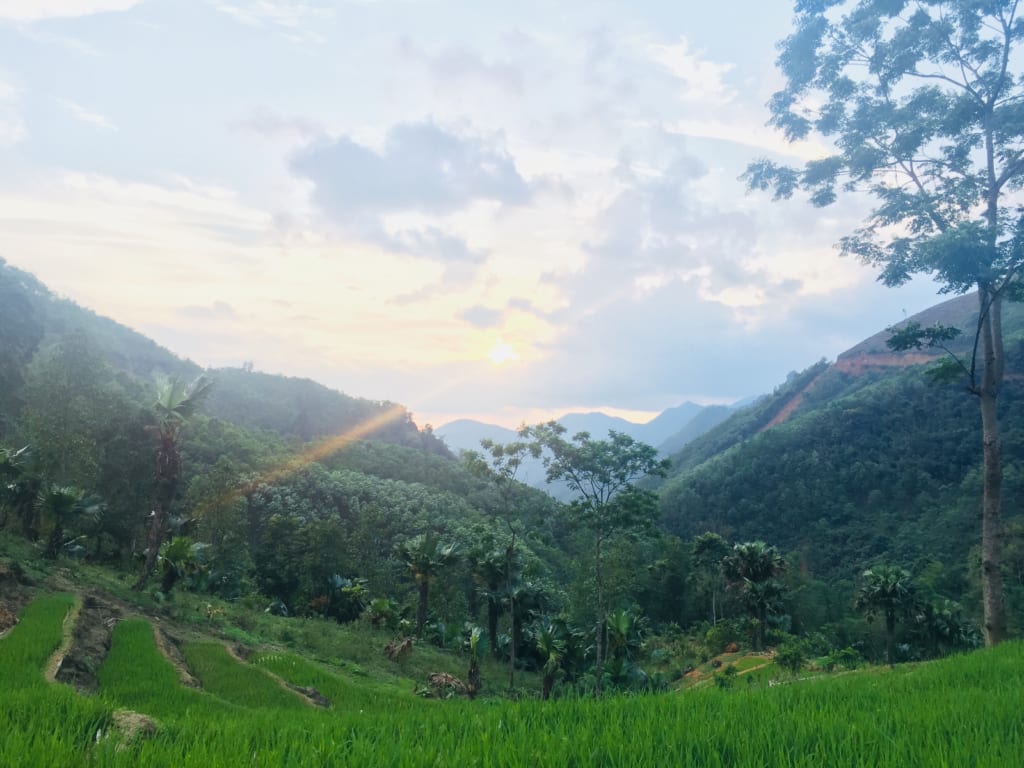
Binh Lieu
Known for domestic tourism, international tourists are scarce. During the yellow rice paddy season, known as the golden carpet, the scenery is breathtaking. The hikes, which are rich in a wide ethnic variety, are pleasant, sometimes with a splendid view, and sometimes with a view of the local life. Close to Ha Long, it’s an interesting stop before or after a cruise in Halong Bay.
Cao Bang
Cao Bang is primarily known for the Ban Gioc Falls. There’s a lot more to discover. The rice fields are scattered among the karst peaks, beautiful black rocks adorn the landscape. Do not miss a visit to a village of the Nung minority, known for being excellent craftsmen for sewing and cutlery. Gastronomic advice, enjoy Cao Bang sausages (Lap son), well known in North Vietnam
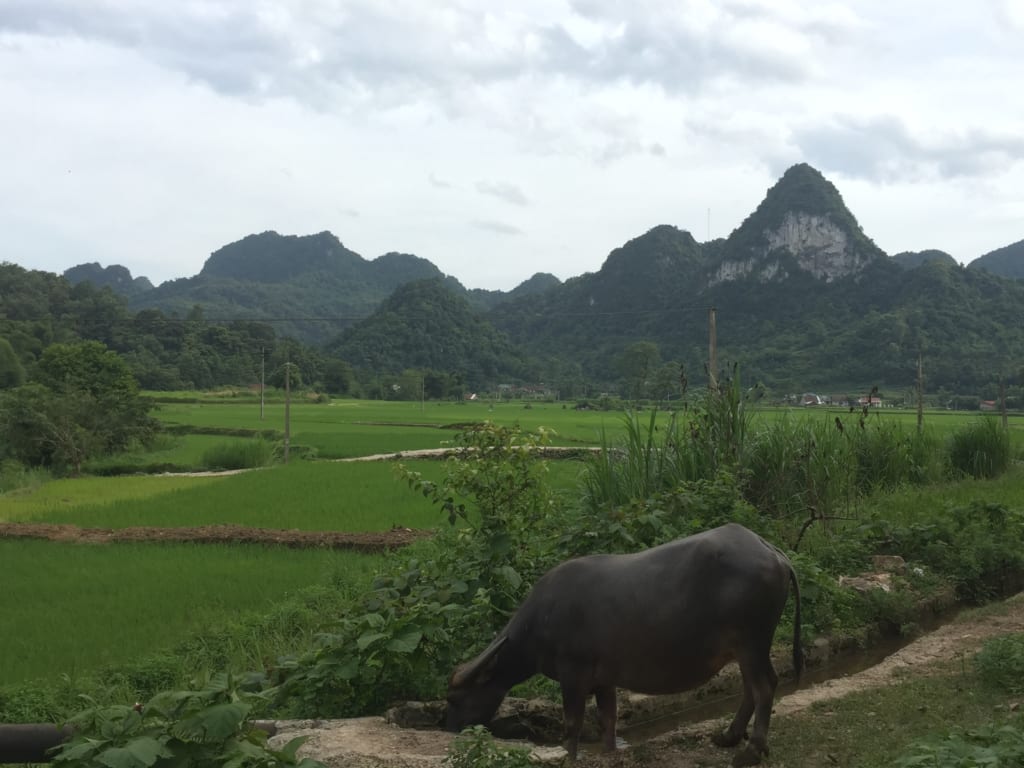
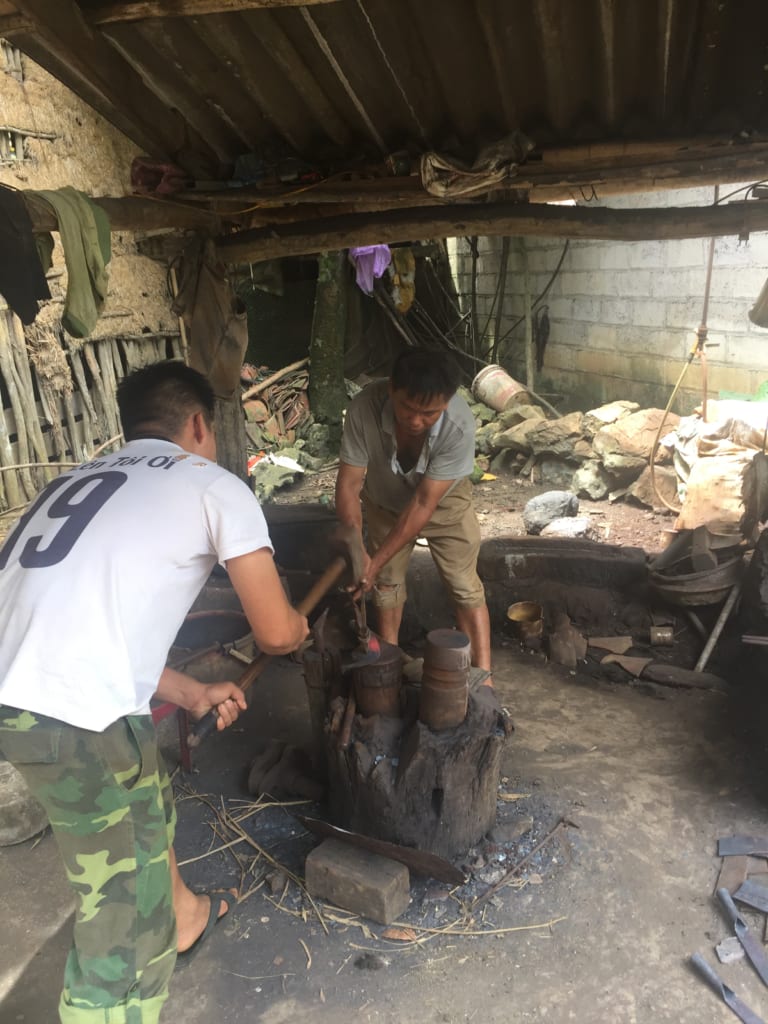
Lang Son
At the time, it was a commercial hub between China and Vietnam. You can always find a huge market there. The city is interesting to visit but it is the beauty of the surroundings that invite to visit this province. The Son ferry valley is best known.
Tay Phuong
A great alternative to the village of Duong Lam is to visit the nearby village of Tay Phuong. You can also admire the century-old houses and the charming pagodas. Combined with a bike ride and a meal at home, a total change of scenery just an hour from Hanoi.
Nam Dinh
Just an hour and a half from Hanoi, Nam Dinh province is largely underrated. The city of Nam Dinh is rich with a strong French influence and there are similarities such as the district of 36 streets of Hanoi, in miniature of course. In addition, the province is rich in craft villages, bamboo and ratan products, blown glasses (found in local beer stalls), trumpets, silk, bells, it’s a journey to the heart of Vietnamese know-how. In addition, with 800 churches and 1200 pagodas, religious festivities are in full swing.
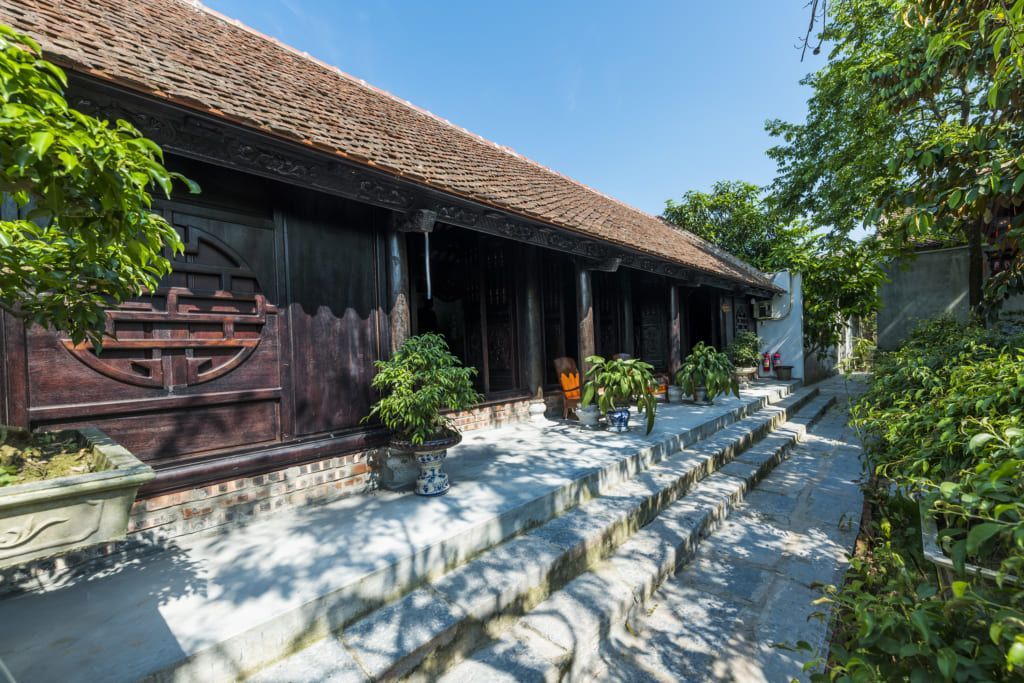
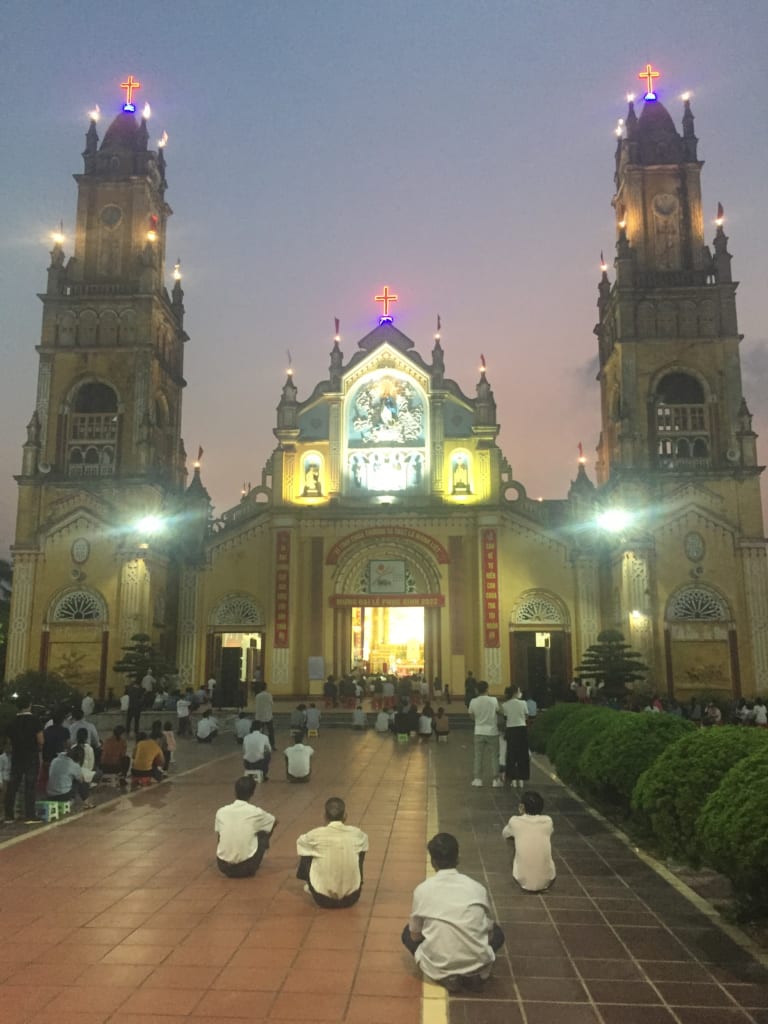
Hai Phong
The third largest city in the country with a population of over 2 million, this coastal city is known for its gastronomy, including delicious seafood. Now you have an app that you can install to find out the best restaurant to experience the local food. A city teeming with life, wandering through the streets to the central market and admiring the colonial buildings and the theatre make it possible to discover the hectic activity of Haiphong
Co To
In addition to Halong Bay (including the island of Cat ba), the resorts are very limited in North Vietnam. For a beach break in the North (from April to November), you can go to the island of Co To. Here too it is in full development but it remains very pleasant. This is a great option if you have already come to Vietnam and want to take a beach break during the Northern tours.
What to see and what to do in North Vietnam?
I can do !
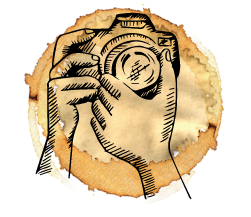 There is a lot to do in North Vietnam and one can easily vary the activities
There is a lot to do in North Vietnam and one can easily vary the activities
- A 2- or 3-day cruise through Halong Bay (Bai Tu Long Bay or Lanh Ha Bay)
- A traditional canoe ride through the Tam Coc or Trang An Nature Parks
- Walk through Hanoi’s Old Quarter, Shopping in the 36 streets
- Trekking in the northern mountains to admire the rice terraces (Mu Cang Chai, Sapa, Hoang Su Phi, Pu Luong)
- Trekking through the jungle to learn about the health benefits of local plants
- Meeting minorities
- Participating in local crafts (sewing, stitching and harvesting rice, lantern design, iconic hats, traditional fishing, etc.)
- Spend a night at home
- Soak up the spiritual atmosphere in a pagoda or temple
- Try your hand at adventure with paragliding in pairs, climbing, rafting, a night under the stars in jungle
UNESCO sites
North Vietnam has 4 World Heritage sites and 1 Global Geopark site. The best known are on Halong Bay as well as the famous Trang An complex in the province of Ninh Binh. Less known and visited, the Imperial City of Thang Long in Hanoi as well as the Citadel of the Ho Dynasty in Thanh Hoa deserve a visit for a trip back in time. Dong Van Geopark in Ha Giang Province is Vietnam’s first listed geopark, an incredible site.
- Halong Bay
- Trang An Landscape Complex
- Imperial City of Thang Long – Hanoi
- Dynasty Citadel , Thanh Hoa
- Dong Van Geopark, Ha Giang
National parks
| Region | Name | Year | Size (ha) | Province |
| Northwest | Hoàng Liên | 2002 | 29,845 | Lào Cai, Lai Châu |
| Northwest | Ba Bể | 1992 | 7,610 | Bắc Kạn |
| Northwest | Bái Tử Long | 2001 | 15,783 | Quảng Ninh |
| Northwest | Xuân Sơn | 2002 | 15,048 | Phú Thọ |
| Northeast | Tam Đảo | 1996; | 36,883 | Vĩnh Phúc, Thái Nguyên,Tuyên Quang |
| Red River Delta | Ba Vì | 1991 | 10,815 | Hà Nội |
| Red River Delta | Cát Bà | 1986 | 15,200 | Hải Phòng |
| Red River Delta | Cúc Phương | 1994 | 22,200 | Ninh Bình, Thanh Hóa,Hòa Bình |
| Red River Delta | Xuân Thủy | 2003 | 7,100 | Nam Định |
| Central North Coast | Bến En | 1992 | 14,735 | Thanh Hóa |
What do we eat in North Vietnam?
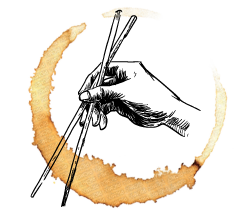 Vietnam is known for its delicious and varied gastronomy. There is a big difference between street food and “home” meals. Traditional family meals will generally consist of rice, vegetables, broth, meat and/or fish. For dessert, this will be a plate of fruit that you can accompany with tea.
Vietnam is known for its delicious and varied gastronomy. There is a big difference between street food and “home” meals. Traditional family meals will generally consist of rice, vegetables, broth, meat and/or fish. For dessert, this will be a plate of fruit that you can accompany with tea.
Main dishes:
- Pho Bo: Soup with white pasta, herbs and minced beef (also includes Pho Ga, Pho ngan
- Bun Cha: Broth with pork balls, papaya pieces and sliced carrots. A bowl of pasta and a mix of herbs are served separately
- Cha Ca: Delicious pieces of fried fish in front of you. Served with fresh pasta, peanuts, herbs and fish sauce (nuoc mam)
- Bun Rieu: Soup with tomatoes, tofu and fresh pasta.
- Pho Cuon: Rolls of fresh pasta topped with salad, herbs, beef and dipped in a sauce
- Banh Cuon: Cooked pancakes with fried onions topped with broth. They can be plain, mushroom, egg, beef
- Lau (hotpot): Vietnamese fondue. A very fragrant broth (several types possible). It can be meat or seafood. It can be Vietnamese, Korean, Chinese or Thai
- Bun Dau: Vegetarian-based dish that has evolved. Originally, only tofu, fresh pasta and herbs. Now it can be accompanied by meats and nems. It is traditionally served with Mam tom sauce (fermented shrimp sauce)
